It’s been a long time since I’ve posted any curlew photos. These migratory birds only recently returned to northern Utah and my first opportunity to photograph them up close this year was three days ago on Antelope Island.
1/3200, f/7.1, ISO 400, Canon 7D, Canon EF 500mm f/4L IS II USM + EF 1.4 III Extender, not baited, set up or called in
On that morning I spent some time with a loose group of two females and a male. Females have a slightly longer bill which is flatter near their head and slighty more curved at the tip than that of the male which is gently curved throughout its length. This is a female.
Their intention was probably to forage for insects in the grasses and soil but with the stiff north wind and temps in the 30’s it was bone-chillingly cold and they spent much of their time motionless and facing into the wind. I caught this one walking which provided slightly more interest than a static bird.
1/2500, f/7.1, ISO 400, Canon 7D Mark II, Canon EF 500mm f/4L IS II USM + EF 1.4 III Extender, not baited, set up or called in
Curlews don’t show much color until they ruffle their feathers or take flight. This female revealed some of her cinnamon and orange-brown coloration when she roused.
1/3200, f/6.3, ISO 500, Canon 7D Mark II, Canon EF 500mm f/4L IS II USM + EF 1.4 III Extender, not baited, set up or called in
The purpose of that bizarrely long bill is to facilitate capturing shrimp and crabs living in deep burrows on tidal mudflats (its wintering grounds) or burrowing earthworms and insects in pastures but it also comes in handy when they’re preening feathers on their rump and tail which they can do almost effortlessly. It’s another story though when they’re trying to groom feathers on their neck and upper breast.
1/3200, f/7.1, ISO 400, Canon 7D Mark II, Canon EF 500mm f/4L IS II USM + EF 1.4 III Extender, not baited, set up or called in
Even the shorter-billed male can reach those far away feathers with very few contortions and little effort.
1/4000, f/6.3, ISO 500, Canon 7D Mark II, Canon EF 500mm f/4L IS II USM + EF 1.4 III Extender, not baited, set up or called in
This full frame image is one of my favorite shots from that morning. In other photos of this bird I have better eye contact with the head turned more toward me but I prefer this one because there’s better light on that long bill and I like the dreamy effect of the curlew looking off into the distance of that soft background.
That incredibly long bill must be cumbersome and inconvenient at times and for years I wondered how long the bill was of newly hatched curlew chicks. Obviously it couldn’t be proportionately as long as the bill of an adult inside the egg but until three summers ago I’d never photographed or seen a very young chick up close so I really didn’t know.
1/1600, f/6.3, ISO 500, Canon 7D Mark II, Canon EF 500mm f/4L IS II USM + EF 1.4 III Extender, not baited, set up or called in
This curlew chick provided the answer – it isn’t very long at all. By the end of its first year the bill of this youngster will be as long as that of an adult male.
The curlews on Antelope Island are still resting and recuperating from the efforts of migration but soon they’ll be competing for mates and that often provides interesting photo-ops. I’m looking forward to the possibilities.
Ron


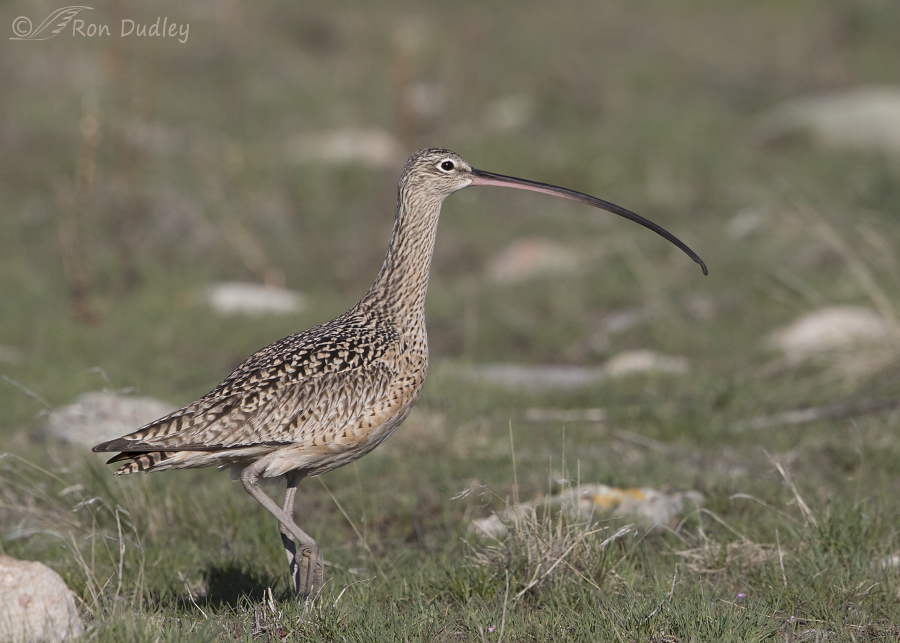
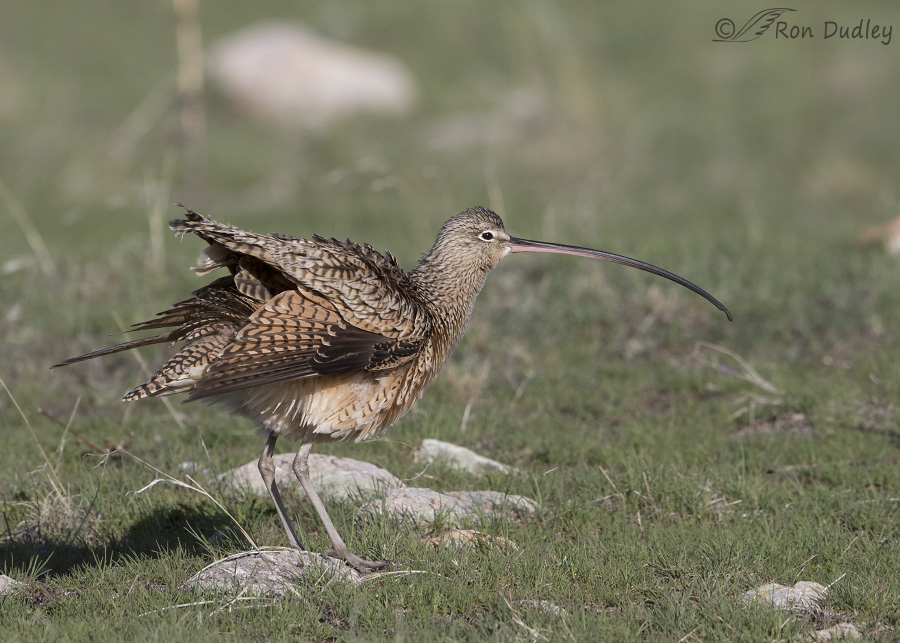
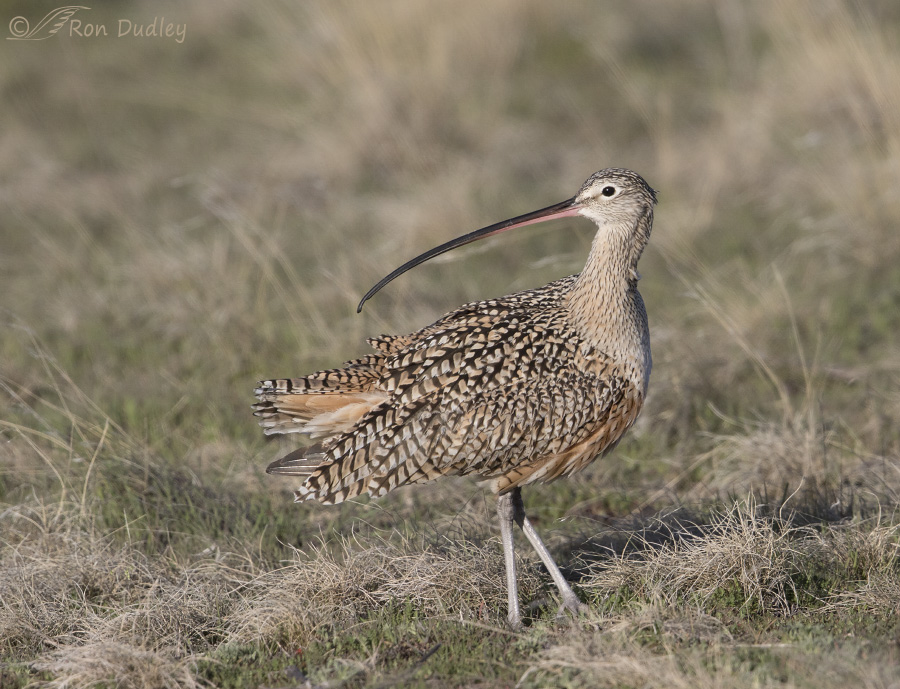
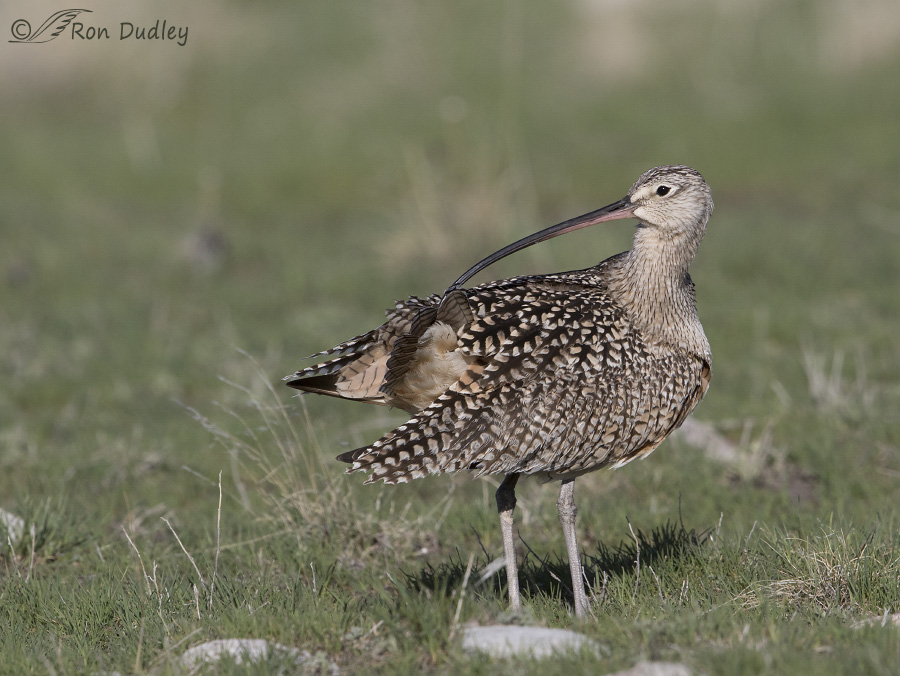
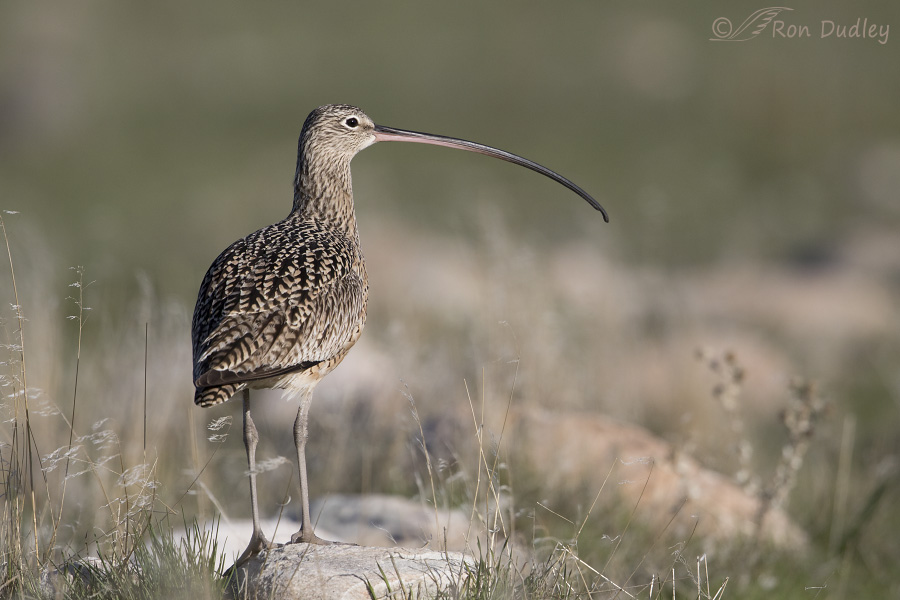
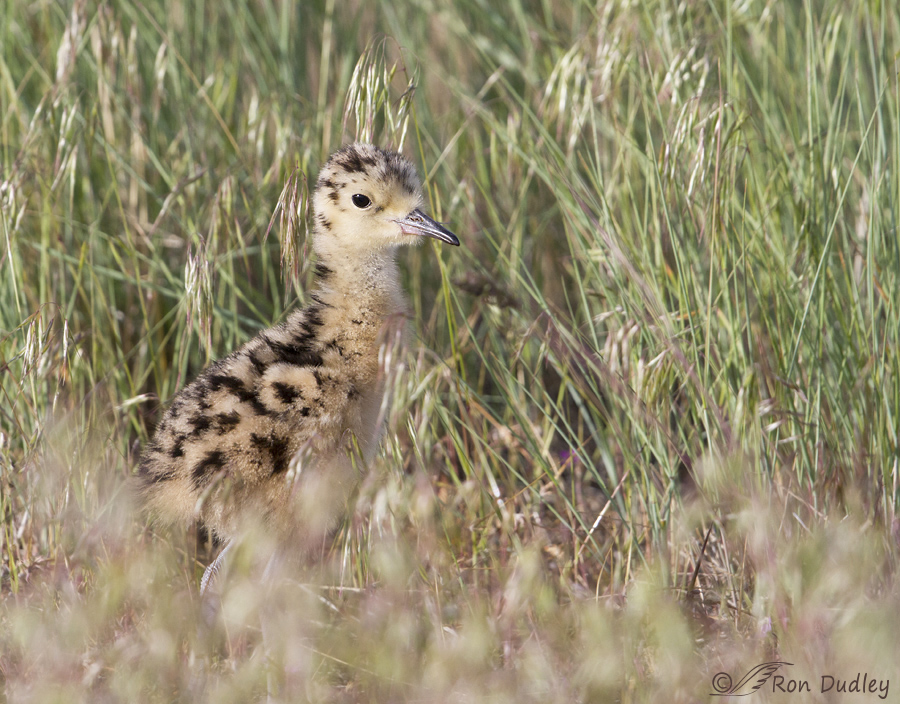
I like these, too, especially the beautiful “dreaming”‘ and chick images (see, I’m not just a RTHA snob!) Curlews are fascinating-looking birds … and now I wonder, do they help each other with grooming those upper body areas that are unreachable? That would make an interesting photo (a new challenge for you, as if you needed another one).
Chris, it’s my guess it doesn’t happen very often if it happens at all. But with birds there are so many new things to be learned about behavior. The same is true for mammals – which will probably be the topic of my post tomorrow…
Beautiful photos. I never saw one despite living in Utah for 6 months a long while back.
Donna, depending on if it’s spring or summer you usually have to go to prairie or shore to see them here. Thank you.
They are such an ‘improbable’ looking bird. I can see that close grooming would indeed be a challenge.
Lovely soft, subtle colouration too.
Can you imagine the size of the egg if the chicks beaks were as long as their parents?
I’ve actually photographed their egg, EC. It’s not THAT big but it is big…
https://www.featheredphotography.com/blog/2016/12/23/a-mysterious-long-billed-curlew-egg/
I remember that post. Yes the egg is big, but how much bigger would it need to be to accommodate a bigger bill at hatching. Muscles of mine are clenched tightly just considering it.
Love that second to last photo (your favorite too). I think it is a bird-photography perfection!
Thanks very much, Joanne.
Natural selection is soooo cool sometimes! They’re such pretty birds.
I will admit that I picture one of them running, looking down, getting stuck, and then pole vaulting over that bill.
Ha, that image in my mind brought a laugh, Marty. Thanks for that!
Wonderful series of photos. The end of that bill’s narrowness looks like it would be challenging to capture anything of size.
I’ve never seen them swallow anything very big, Alice. But that bill sure is effective in finding and capturing grubs in the ground. The end of it must be extremely sensitive.
Wonderful series Ron, love the chick!
Charlotte
Thank you, Charlotte. Cute little guy…
Hummingbird babies start life with short bills, too…Curlews are so beautiful and graceful-looking, but those bills seem twice as long as they should be. They must be awkward and challenging at times—like trying to use a long-!handled “grabber” to put something in a small bag that’s close to you.
“Curlew dreaming”…perfect! My favorite image, too.
Perfect analogy, Patty. I’ve seen them trying to reach as far up on their lower necks as they can with their bills and it just doesn’t work.
Your favorite image is mine also, I just love the “curlew dreaming” image, but all of them are perfect. I have never seen a curlew and am beginning to think a visit to Antelope Island should be on my bucket list. I am so glad I found your blog – thank you!
The island is great, Nancy – especially in spring and early summer (though biting gnats can be an issue). Hope you get to see it.
Amazing!
Thanks, Elmer.
Wow, sounds COLD. I’m impressed that you were out there. Another great series though and looking forward to seeing more as they start to interact.
Thanks Ron.
Frank, my hands were so cold I had to put a glove on my left hand to even feel it…
Another of your wonderful posts—I especially liked the inclusion of the chick’s ( short ! for now ) beak –you do come up with fascinating info !
Kris, I’d been curious about the length of the bill of the young chick for a very long time. It was nice to get that itch scratched!
Wonderful shots, Ron, great post.
I will always remember the occasion and where I saw my life Long-billed Curlew!
Me too. I simply could not believe the length of that bill!
Beautiful! They were fairly common here for many years but have all but disappeared. Think the cultivated fields where they would nest may have contributed to that.
Judy, their numbers are seriously declining in many areas, largely do to the destruction of their grassland summer range. Antelope Island is truly a refuge for them.
Brilliant work, Ron!
Thank you, Joel.
I enjoy your posts everyday. You never fail to amaze and inform, and I often carry your images and insights in my mind throughout the day. As for today’s Curlews and their preening challenges, I wonder if they groom each other in those hard to reach areas? Also, I never tire of the Red-Tailed Hawk images and comments.
Interesting thought about the possibility of them grooming each other’s necks, Robert. It’s something I don’t recall seeing but that doesn’t mean they don’t occasionally do it.
BNA Online says “Scratches head, breast, and neck directly; uses bill to scratch other areas of body”. Perhaps foot-scratching substitutes for bill-preening in those three hard to reach areas…
Spectacular series, Ron! I’m looking forward to the possibilities, too!
Thank you, Diane.